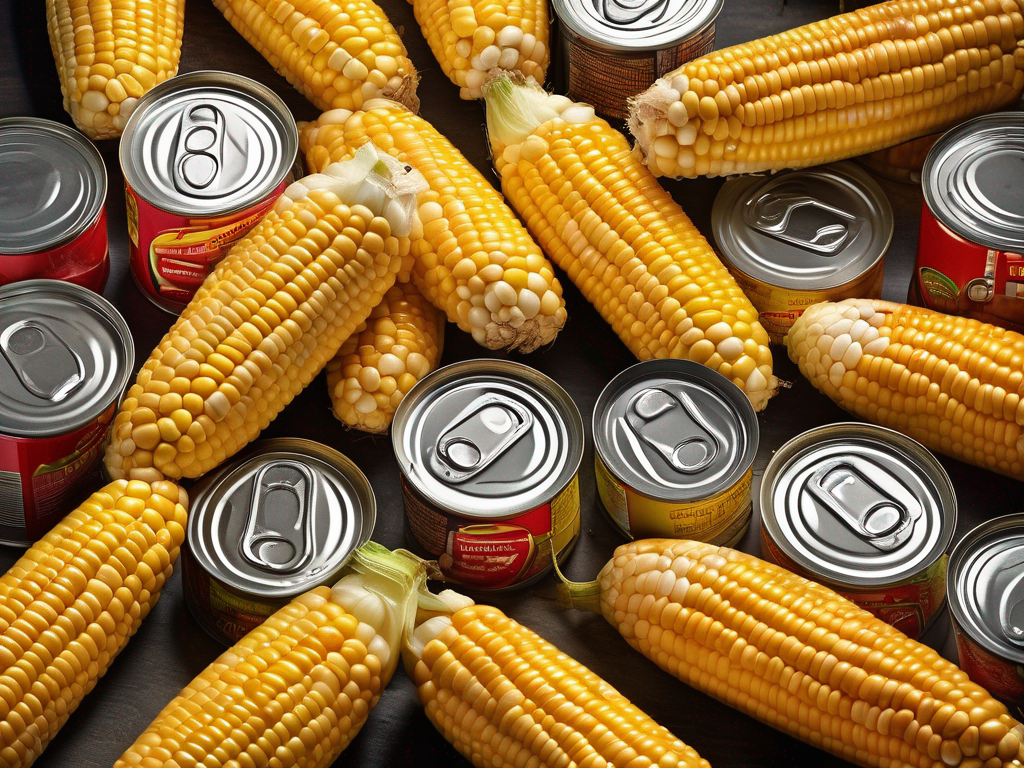
The Ultimate Guide to Safely Storing Leftover Canned Corn
Stop Wasting €1,500+ Per Year on Food You Think is Expired
Get our 16-page guide with exact timelines for 70+ foods. Know instantly what's safe to eat—no more guessing.
The Ultimate Guide to Safely Storing Leftover Canned Corn
Canned corn is a convenient and versatile pantry staple that can be used in a variety of dishes, from soups and salads to casseroles and stir-fries. However, like all perishable foods, it's important to store leftover canned corn properly to ensure its safety and quality. In this comprehensive guide, we'll explore the best practices for safely storing leftover canned corn to minimize the risk of foodborne illness and spoilage. (Canned corn)
Why Proper Storage Matters
Properly storing leftover canned corn is essential for maintaining its freshness and flavor while preventing the growth of harmful bacteria. When canned corn is exposed to improper storage conditions, such as temperature fluctuations or contamination, it can quickly spoil and become unsafe to eat. By following these tips for safe storage, you can extend the shelf life of your canned corn and enjoy it for longer.
Tips for Safely Storing Leftover Canned Corn
-
Refrigerate Promptly: After opening a can of corn, transfer any leftover corn to an airtight container and refrigerate it promptly. Leaving canned corn at room temperature for an extended period can promote bacterial growth and spoilage.
-
Label and Date: To keep track of how long your canned corn has been stored, be sure to label the container with the date it was opened. This will help you determine when it's time to use up the leftovers or discard them.
-
Use Within 3-4 Days: While canned corn has a long shelf life when unopened, once it's been opened and exposed to air, it should be consumed within 3-4 days to ensure its freshness and safety. Discard any leftover corn that has been stored for longer than this timeframe.
-
Store in the Right Temperature: Keep leftover canned corn in the refrigerator at a temperature below 40°F (4°C) to slow down bacterial growth and maintain its quality. Avoid storing canned corn in the fridge door, as temperature fluctuations can compromise its safety.
-
Avoid Cross-Contamination: When storing canned corn in the refrigerator, make sure to keep it separate from raw meats, seafood, and other potentially hazardous foods to prevent cross-contamination. Use a designated shelf or drawer for canned goods to minimize the risk of foodborne illness.
Additional Tips for Safe Storage
-
Freezing Leftover Canned Corn: If you have more canned corn than you can use within a few days, consider freezing the leftovers for longer storage. Transfer the corn to a freezer-safe container or resealable bag, removing as much air as possible before sealing. Frozen canned corn can be stored for up to 6 months.
-
Check for Signs of Spoilage: Before consuming leftover canned corn, always check for signs of spoilage, such as an off odor, mold growth, or unusual discoloration. If the corn appears slimy or has an off taste, it's best to discard it to avoid foodborne illness.
-
Reheat Safely: When reheating leftover canned corn, ensure that it reaches an internal temperature of 165°F (74°C) to kill any potential bacteria that may have developed during storage. Use a food thermometer to verify the temperature before serving.
-
Use in Recipes: To make the most of your leftover canned corn, incorporate it into soups, stews, salads, and casseroles for a quick and flavorful meal. Be sure to heat the corn thoroughly when adding it to cooked dishes to ensure its safety.
Conclusion
Properly storing leftover canned corn is essential for maintaining its quality and safety. By following these tips for safe storage, you can enjoy the convenience of canned corn while minimizing the risk of foodborne illness and spoilage. Remember to refrigerate leftover canned corn promptly, use it within 3-4 days, and always check for signs of spoilage before consuming. With these guidelines in mind, you can make the most of your canned corn while keeping your meals safe and delicious. [Learn more about canned corn here](/food/canned corn). (Canned corn)
Related Posts
Here are some other articles you might find helpful:
- Solutions for Preventing Mold Growth on Opened Canned Corn
- How to Properly Store Canned Corn for Long-Term Freshness
- Safely Storing Opened Corned Beef Hash: A Comprehensive Guide
- The Best Ways to Store Corned Beef Hash Commercially Canned Unopened for Maximum Freshness
- Is Your Corned Beef Hash Commercially Canned Unopened Still Safe to Eat?
Authoritative Food Safety References
These agencies and university labs inform every tip and health precaution we publish.
USDA FoodKeeper – Cold Storage Guidelines
Official refrigerator, freezer, and pantry timelines maintained by the U.S. Department of Agriculture.
Visit USDA FoodKeeperFDA Produce Safety Rule & Grower Guidance
Field-to-fridge handling practices that prevent contamination of fruits, vegetables, and leafy greens.
Visit FDA Produce SafetyCDC Foodborne Illness Prevention Hub
Surveillance-backed guidance on pathogens, symptoms, and steps to reduce foodborne illness risk.
Visit CDC Food SafetyUC Davis Postharvest Technology Center
University research detailing optimal storage atmospheres for produce after harvest.
Visit UC Davis PostharvestPenn State Extension – Home Food Preservation & Safety
Peer-reviewed extension bulletins on safe canning, chilling, and reheating practices.
Visit Penn State ExtensionStop Wasting €1,500+ Per Year on Food You Think is Expired
Get our 16-page guide with exact timelines for 70+ foods, 15 real-world scenarios, and troubleshooting tips. Know instantly what's safe to eat—no more guessing or Googling.
Scan your food directly and get instant safety info using our AI-powered camera feature.